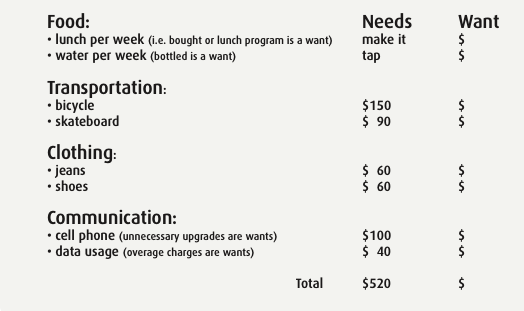
Explore a variety of STEAM activities with Brainspace in honour of National STEAM Day on November 8th!
Join us to celebrate 5 days of STEAM with tons of STEAM activities each of the five days this week! View all our blogs for this week here:
Day 5: Mathematics (4 activities)
Percentages
‘Tis the season of PERCENTAGES
You’re shopping for a gift. A sign says 30% off the regular price. You could use the calculator function on a cell phone, but why not get the satisfaction of mentally calculating it yourself? Here are quick tricks for calculating percentages.
The Basics
If you can learn to calculate 10% and 50% of any number, the rest is easy. So let’s start with the basics.
10%
To calculate 10%, you must divide a number by 10. Or, the same result is obtained by moving the decimal point one spot to the left. For example, if an item costs $100.00, simply move the decimal one spot to the left (100.00): $10.00 is 10% of $100.00. Take away $10.00 from $100.00, or 100 – 10. The sale price is $90.00.
50%
Divide by 2 or halve any number to obtain 50%. For example, if something costs $49.99, round up to $50.00. Half of 50, or 50 ÷ 2, is 25. Take away 25 from 50 or 50 – 25. The difference is 25, therefore the sale price is $25.
Round It Up
When calculating percentages on an amount ending with .99¢ always round to the dollar. For example, 28.99 should be rounded to $29.00. Similarly, an amount with .49¢ should be rounded to .50¢.
25% = 50% ÷ 2
In operations, 25 is half of 50. Therefore, the most efficient way to calculate 25% of a price is to determine 50% or half the price, and halve that result to determine how much 25% is. For example, if your favourite book is priced at $29.99 and it is being discounted at 25% of the price, round up to $30 and divide by 2. $15 is 50% of the price. Now halve $15 to $7.50 to obtain 25% discount.
15% = 10% + half of 10%
In operations, 15 is 10 + 5. Therefore
15% of a price is 10% + 5%. Five percent
is simply half of 10 percent. So if you are calculating a 15% tip, and the total bill is $28.36, move the decimal to the left and arrive at $2.83 for 10% of the total. Halve $2.83 to calculate 5% at 1.42. Add $2.83 (10%) + 1.42 (5%) and you will arrive to $4.25, which is 15% of $28.36.
40% = 50% – 10%
In operations, 40 is 10 less than 50. Therefore 50% of a price minus 10% of the price is what 40% will be. For example, $64.99 shoes are on sale at 40% off. Round $64.99 up to $65. Fifty percent 65 ÷ 2 or 32.50. 10% of 65.00 is $6.50. So, 32.50 (50%) – 6.50 (10%) is 26.50. Therefore, 40% or 26.50 will be taken away from the regular price. You will pay $65.00 – $26.50 = $38.50. Deal!
75% = 50% + 25%
In operations, 75 is 50 + 25. Therefore, the most efficient way to calculate 75% of a price is to determine 50% and add half of that result to 50%. For example, if the price is $14.00, divide it by 2 to get 50% of the price, or $7.00. Divide $7.00 by 2 again for the 25% value of $3.50. Add $3.50 (25%) to $7.00 (50%) and $10.50 is the discount on the price.
$14.00 – $10.50 = $3.50. You will pay $3.50. Big savings!
Walk The Solar System
The universe is incredibly huge, and our solar system is only one small part. To understand its tremendous size, try to recreate our solar system on a smaller – walkable – scale.
You Will Need:
-
A ruler and a tape measure
-
A ball that is about
23 cm across, like a volleyball, to be the Sun -
Two objects that are 0.8 mm across, like a grain of salt, to be Mercury and Mars
-
Two objects that are
2 mm across, like a peppercorn, to be Venus and Earth -
An object that is 2.4 cm across, like a small cherry tomato, to be Jupiter
-
An object that is 2 cm across, like an acorn or walnut, to be Saturn
-
Two objects that are 0.8 cm across, like a peanut, to be Uranus and Neptune
Step 1
Using a ruler, search your house for objects to represent the Sun and planets. To keep the sizes of all the model planets accurate relative to the size of the model Sun, follow the measurements in the Items Needed list.
You will create the solar system with the Sun at the centre, by placing the planets as far apart as they would be in space but on a much smaller scale. This activity needs a lot of room and you will have to go outside.
Step 2
Place your model Sun on the sidewalk or in a large park. Now place the planets. Although they don’t orbit together in a straight line, to understand the distance between them, lay them out one after the other.
Measure one metre with a tape measure and practice jumping that distance. Each metre will represent six million km in space. Mercury is the closest planet to the Sun and it orbits 58 million km away. If one metre represents six million metres in space, divide 58 million by six million and you get 9.67. Let’s round up to 10. So, you will need to jump 10 times before you place Mercury.
The Math
For each planet, continue to divide the distance from the sun by 6 million and then subtract the previous number of jumps. For example, Mars is 227.9 million km from the sun. Round up to 228M ÷ 6M = 38 and minus the jumps for the previous planets (Mercury 10 + Venus 8 + Earth 7). Finally, 38 – 25 = 13 jumps.
Here is the distance you will need to jump for the rest of the planets:
|
MERCURY |
|
VENUS |
|
EARTH |
|
MARS |
|
JUPITER |
|
SATURN |
|
URANUS |
|
NEPTUNE |
When you place Neptune, you will have jumped or walked about three- quarters of a kilometre or 4.48 billion to our scale Now think about the universe stretching well beyond our solar system. It’s almost too far to imagine.
Spoiler Alert
Have you ever heard someone say, “You are so spoiled!”? Maybe they meant that you have much to be grateful for. But what if they meant that you have way more than you need?
What Is Spoiled vs. Not Spoiled?
It’s essentially the difference between having what you need, and, getting everything you want without any financial consideration. Weighing your choices by thinking about what you need versus what you want is financially smart. For instance, realizing that the new cell phone upgrade you want isn’t necessary because the phone you have suits your needs.
Needs, Wants and Choices
Living according to your needs doesn’t mean not getting to do anything. It may surprise you to discover that having fun is a basic human need (see the chart at the top of the next page). Social outings with friends are important to our mental health. However, a picnic is an excellent outing and an economical choice. It costs less if you pack your own meal. The same mindfulness applies when selecting clothing. Being trendy can make responsible financial decisions difficult when the latest footwear is clouding our judgment. Paying a reasonable $40 – $60 for sneakers you need is smarter than paying $140 or more for bragging rights.

Budget Your Choices
We need stuff. Based on the chart above, many of the needs you have are your parents’ expenses. But every time you are given the option to choose, you impact your family’s finances. Consider the choices you have made in the recent past. We’ve listed a sample of needs and what the average cost should be. If your choices exceed the average cost listed under “Needs,” then write what you actually spent under the “Want” column. For example, if you didn’t pack your own lunch for school and used the lunch program instead, list that cost under the “Want” column. Total up the “Want” column and compare with the “Needs” total.

Are You Economical?
Using the chart on the left is a great way to understand your financial behaviour. Determine if you are on
the right track or if you are ruled by your “wants.” There are times when you may choose to spend more than necessary to treat yourself. But if you regularly choose the higher price tag instead of demonstrating financial restraint you could be behaving in a financially irresponsible – or spoiled – manner. Considering your expenses is an important step in becoming a mature and financially responsible person. Budgeting, saving and earning the finer things in life is both rewarding and smart!
